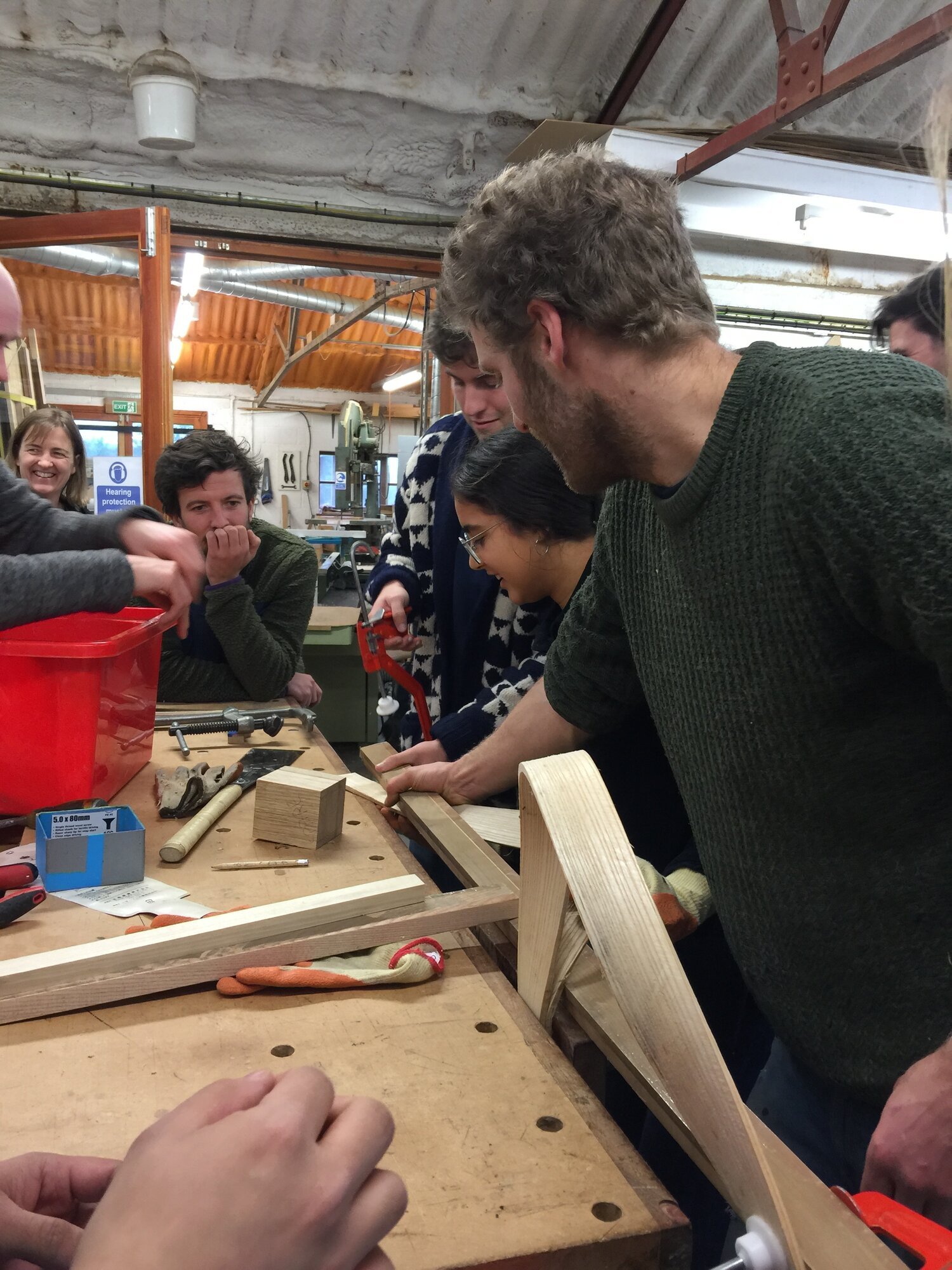Learning Steam Bending with Charlie Whinney
(Written by Kate Stannard - Beginner Steam Bender and Office Coordinator at W & C)
From time to time, we invite visiting tutors that specialise in various techniques or materials to the school to lead workshops for our students. This week, we couldn’t have been more excited to invite Charlie Whinney, one of the UK’s leading steam bending experts to join us to deliver a one day workshop to our students and staff.
Taking a short break from their benches, the students gathered in the classroom (notebooks in hand) to hear Charlie talk about steam bending theory. One of the elements that came across quite clearly from this session is that successful steam bending comes not only from technique but understanding how the tree has grown and reading the timber – identifying its strengths, weaknesses and individual quirks.
I learnt that producing a successful bend goes deeper than the individual characteristics of a piece of timber. As a beginner myself, I learnt that different species of wood lend themselves to tighter bends in the timber – and that understanding the science behind the technique can have as much as a bearing on what is achievable with steam bending as the technique or jig used.
Charlie takes you back to the beginning (no really…) the beginning of life on Earth to understand how the biology of plant life and trees has evolved. This is relevant to steam bending as it’s important to appreciate how the structure of wood is a composite material and that trees grow outwards laying a thick veneer of wood over the whole surface of the tree every year (with the cells grown in the spring bigger to those grown at other times of the year.) For steam bending purposes, this means that that wood is composed of numerous layers of porous long hollow cells all packed together, which when steamed softens the cells so that they may be compressed, flattened and stretched.
As such, just by looking at the structure of the wood, we can visually identify weak points such as run out (where the grain does not run parallel to the surface of the wood and threatens to peel away), knots where the strength and structure will be compromised, or other defects like ash dieback where the pathogen has inhibited the production of cells weakening the structure of the timber.
Charlie also talked about the importance of how your wood is dried. It seems you can steam bend most types of wood but how it is dried will have a bearing on how successful your bend is. Green wood, kiln dried and air dried all works – but kiln dried less successfully because it breaks more easily). Air dried is above all one of the favourites for this process and hardwoods with a very straight grain tend to yield the best results.
While Charlie talked about spring back, it wasn’t until the practical work got underway that I experienced just how quickly wood wants to return to its former shape if not clamped and dried. Following the theory session, the rest of the day was all workshop based with demonstrations and the opportunity to try a range of bends, twists and free form curves.
While Charlie had covered how the cells on the inside of a bend are affected by compression and the cells of the outside flatten and stretch – I was personally really interested in how adjusting the compression or tension on a piece of wood could literally make, or break a bend. Charlie’s jigs incorporated adjustable compression straps with threaded end stops, which could be tightened or loosened off depending on how the wood was behaving during the bending process.
The rest of the afternoon was about having a go ourselves at steam bending – and having a go at free form bending sculptures, lampshades, bowls and book rests. There seem to be endless possibilities of what you can use the steam bending process to make.
It was a really informative and enjoyable day – it was just a shame we ran out of time to steam bend some Christmas decorations!


